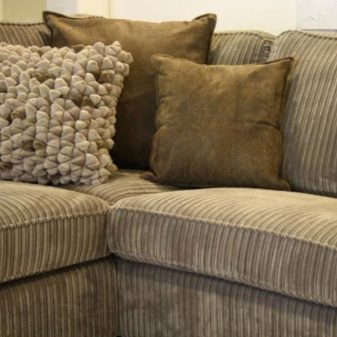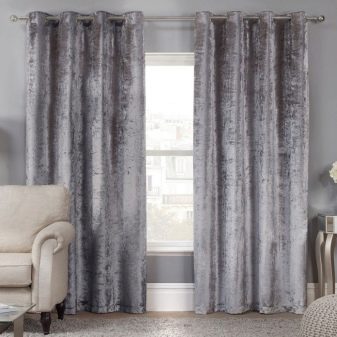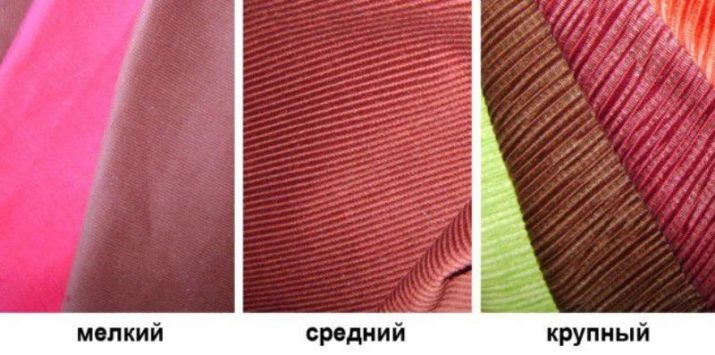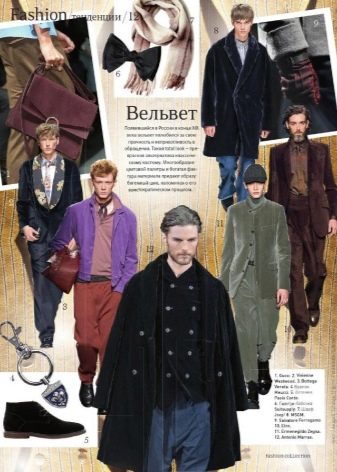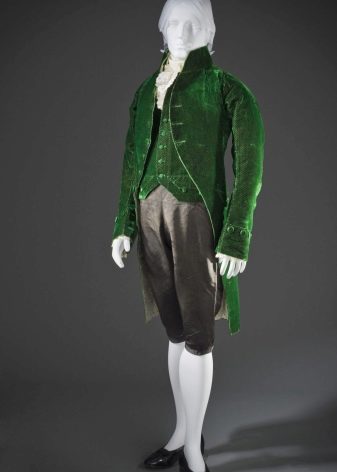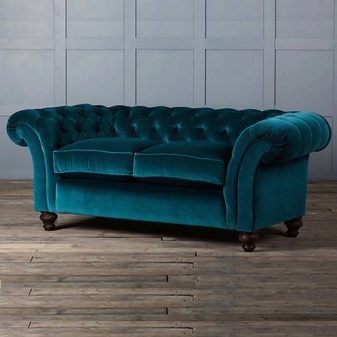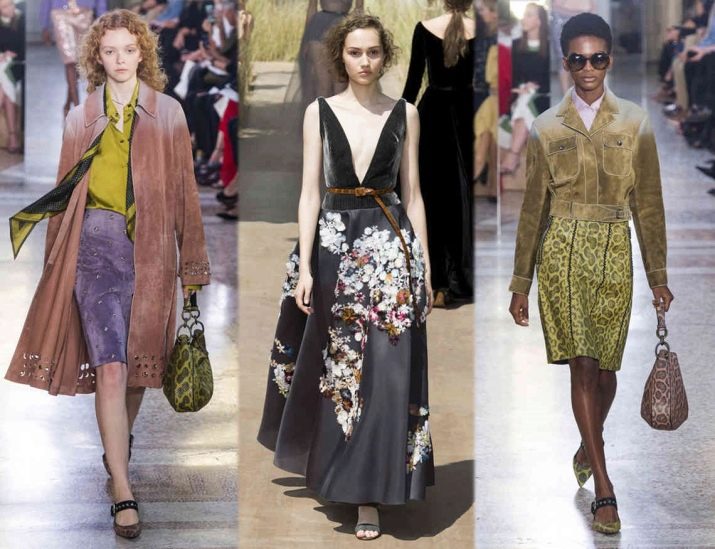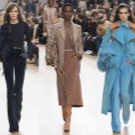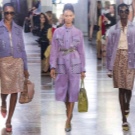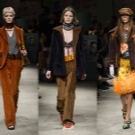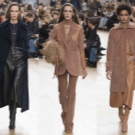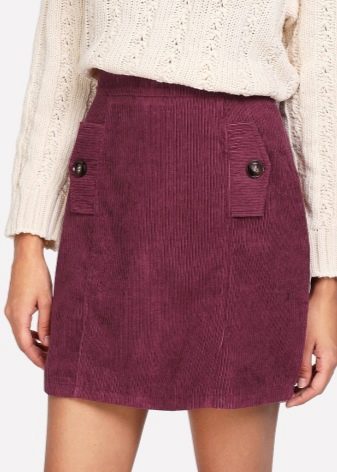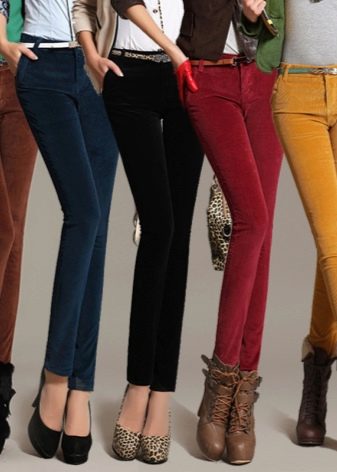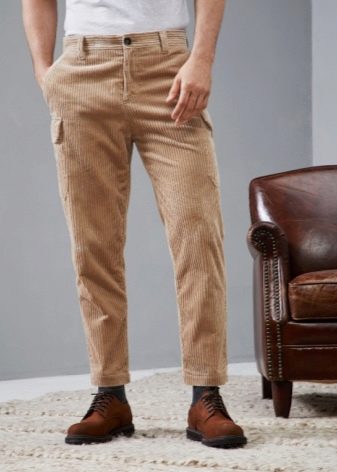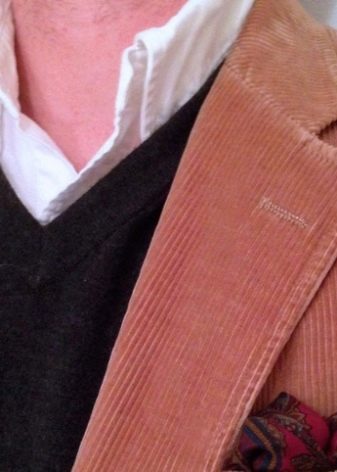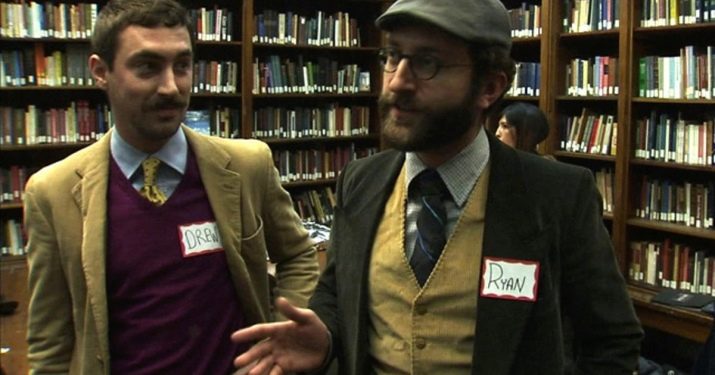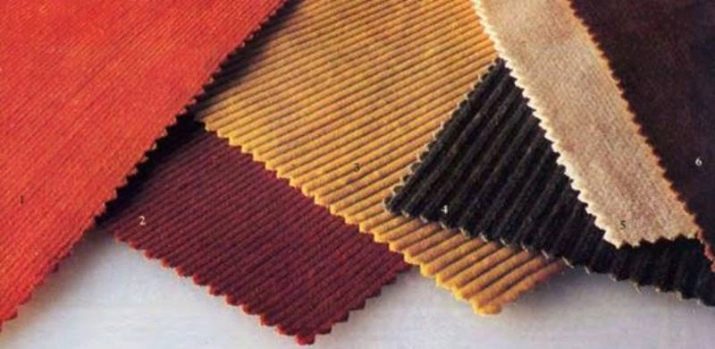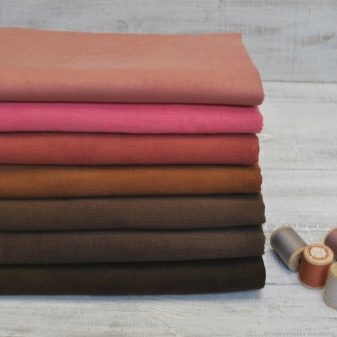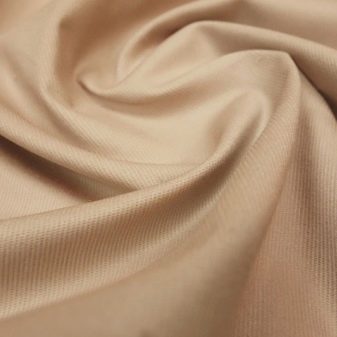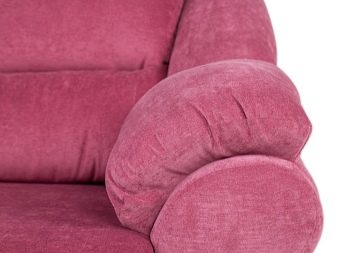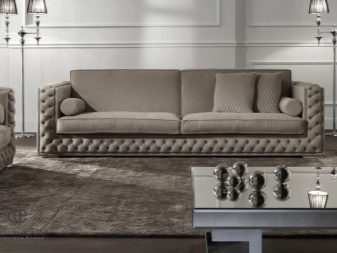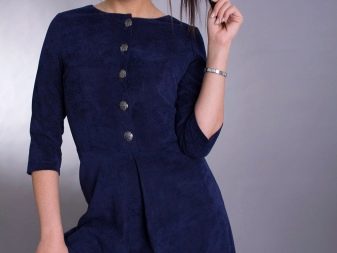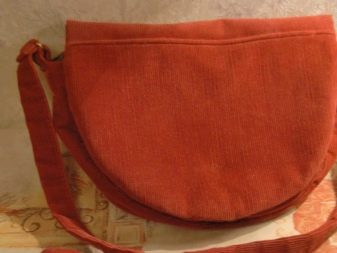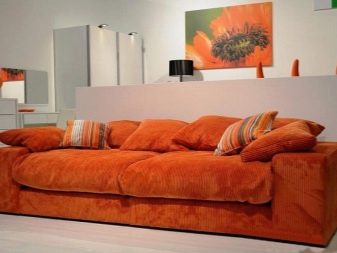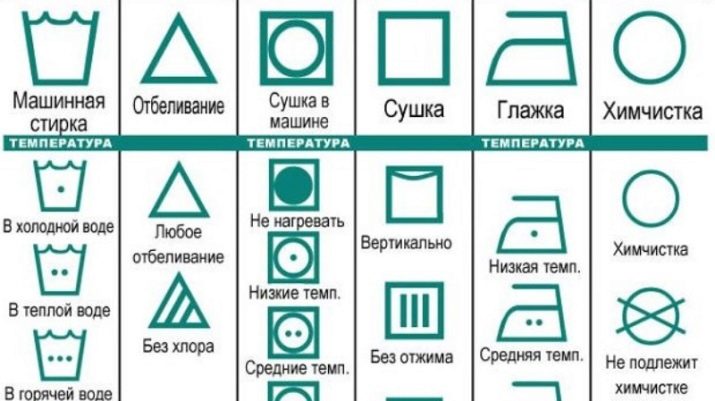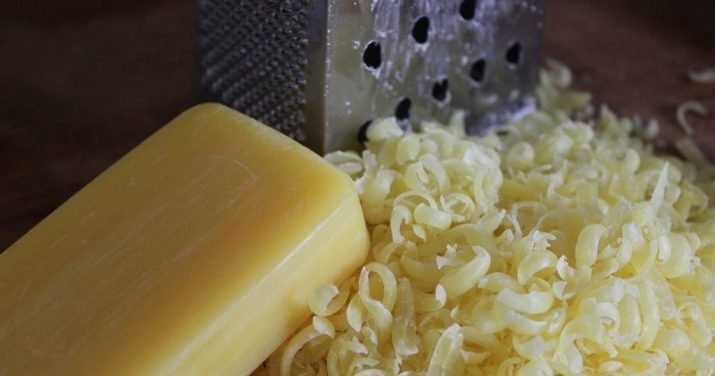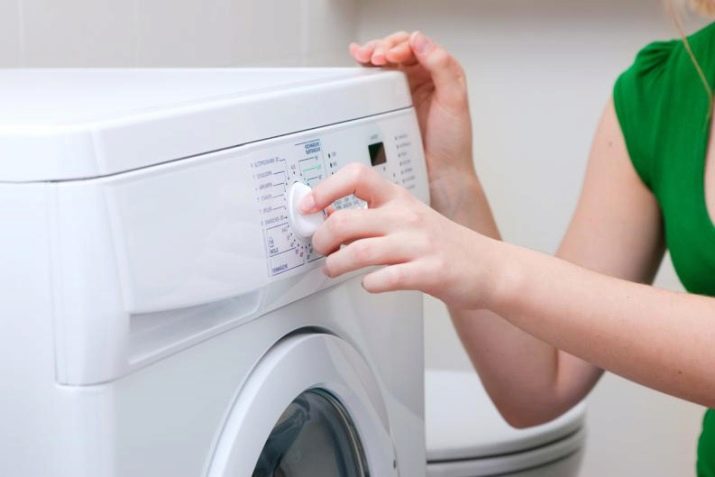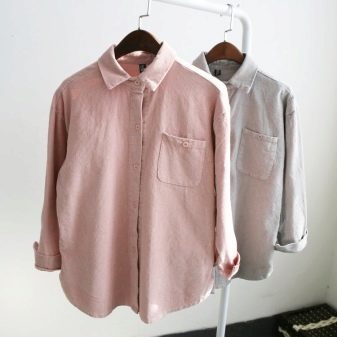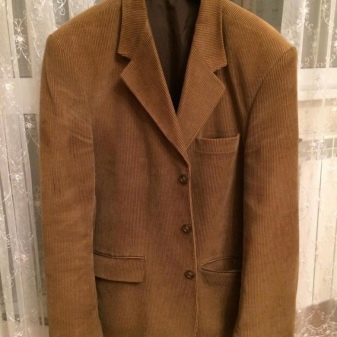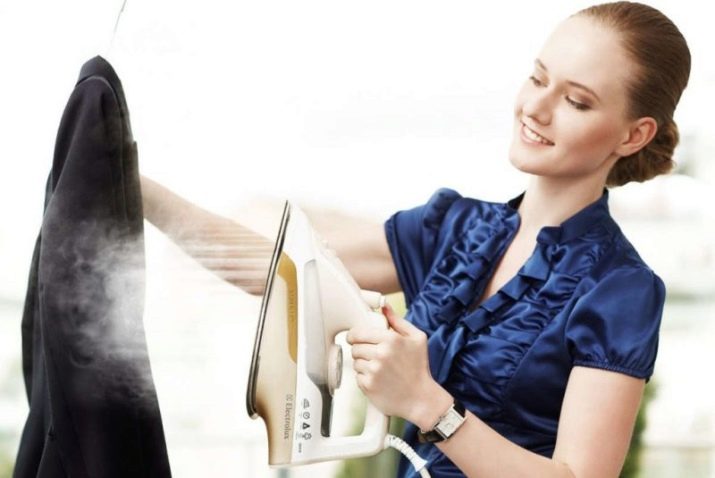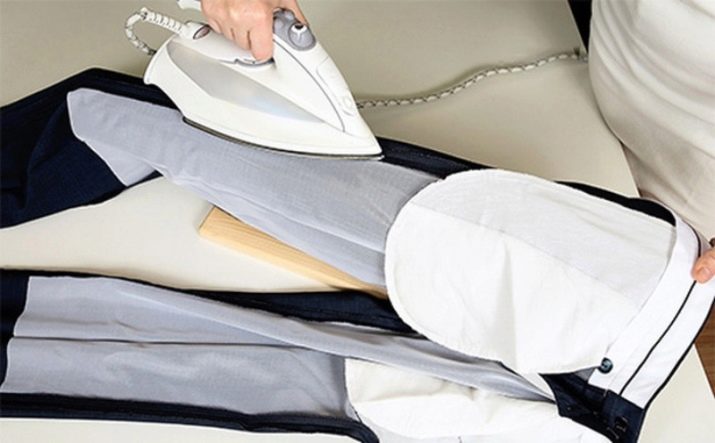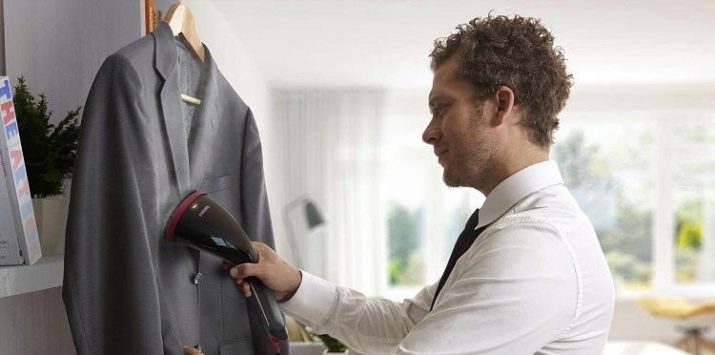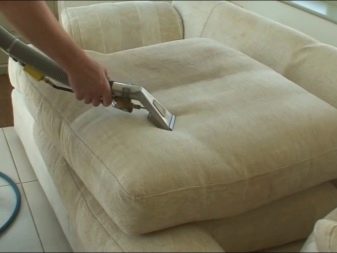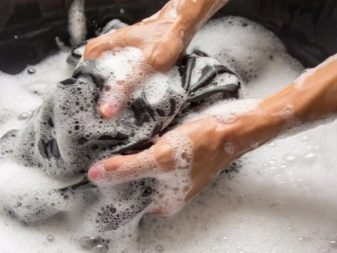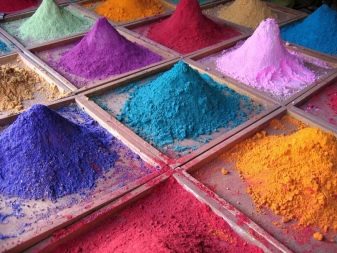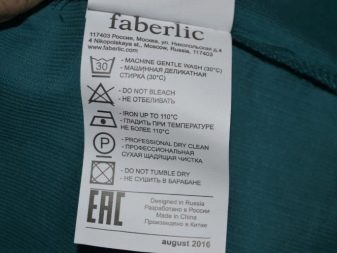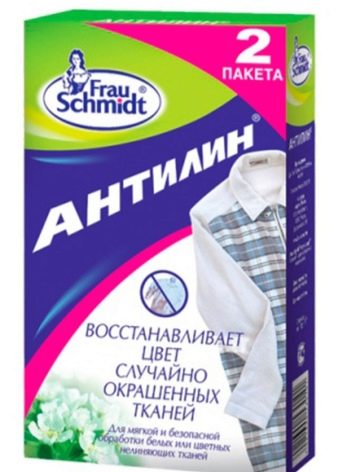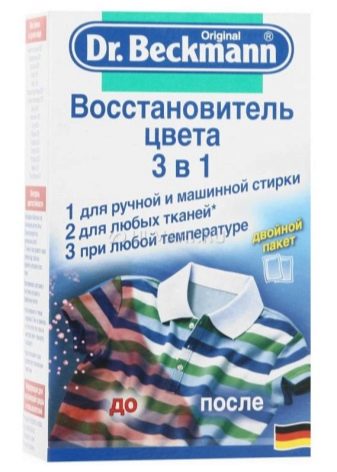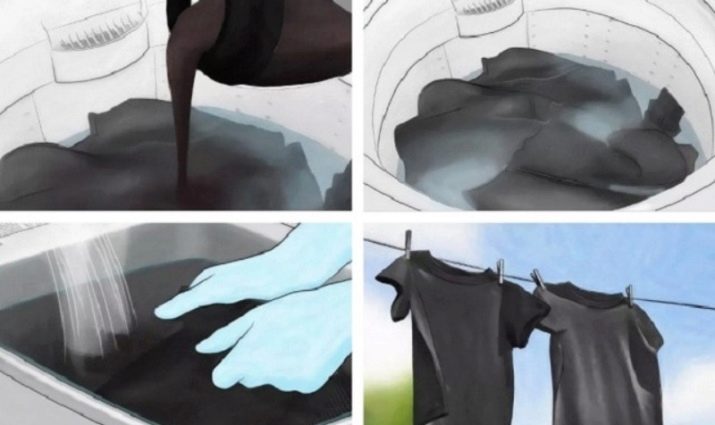Many people remember how fashionable velvet trousers were a couple of decades ago. Especially popular were the trousers from the microvelveteen. Wearing such things dreamed all mods. Now velveteen slightly lost its popularity. In place of it came new materials. But the fabric still has a lot of fans. In addition, it is used not only for sewing good-quality clothing.
This is an excellent material for upholstery of sofas, chairs and other furniture. Velveteen for car upholstery is used, beautiful curtains are sewn from it.
Description and composition of the material
Velvet is a dense fabric that has a velvety structure. Initially, velvet was made only from cotton fabric, but now such a composition is already rare, since it contains synthetic additives in the form of viscose or polyamide. As part of it can only be synthetic fibers.
This fabric is difficult to confuse with any other, it looks rich and noble. The material has longitudinal stripes, covered with nap and a pleasant shine that occurs between the rows when playing light. In appearance, the fabric resembles velvet, but has scars on the cover, due to which the fabric looks attractive and is more resistant to abrasion. From the inside, it looks like a canvas. For coloring usually use muffled tones, less often it is possible to find brighter colors of fabric.
The first mentions of velvet appeared in the Middle Ages. According to one source, its country of origin is France. But the British disagree with this and believe that the first fabric began to produce it in England. They still call this fabric “Manchester” there, considering that velvet was the first to be made in Manchester. You can argue about the origin of the fabric, it is important that it still has great popularity.
The fabric was produced according to the technology, which was kept in secret for a long time and passed from the older generation to the younger. From velveteen, they sewed raincoats for grandees and royals, the fabric was used to make elegant headdresses for gentlemen. Then they began to produce more material, but the first batches were delivered only to the palaces, curtains were made of them. For nobility and kings they sewed burgundy outfits. Ordinary people were forbidden to wear clothes of this expensive material.
In Russia, the material appeared at the end of the XIX century. Curtains were sewn from it more often, and also textiles were used for decorative elements. But by the middle of the XX century, the fabric became very popular, fashion designers and designers paid special attention to it and began to take it more often for sewing products.
Velvet is often used for tightening old furniture and in the manufacture of new products. Textiles used for furniture can be from natural or artificial fabrics made by chemical means, as well as from synthetic materials. All these materials have their advantages and disadvantages. When connecting fibers of different types are made of composite fabric.
Furniture textiles must meet certain criteria:
- it must have good fiber quality;
- resistant colors;
- good breathability;
- high fire safety;
- high strength.
Also, products should be easy to clean, undemanding to care. Velveteen has all these qualities.
Advantages and disadvantages
Velvet is chosen for the manufacture of clothing and other textiles, because the material has several advantages.
- Abrasion resistance. Products from this material are worn for a long time and do not wear out.
- The canvas is quite durable it does not deform or stretch.
- Material pleasant to the body. On the front and back side it has a soft surface.
- It has high thermal conductivity and density. In good things it will be warm on a cold day.
- The material is almost not wrinkled. No need to iron products after washing.
In this case, velvet will be perfectly combined with other materials, so you can create different combinations in clothes.
The disadvantages of this material a little. First of all, this is what:
- dust and small garbage are attracted to velvet;
- if cotton is present in the material, then the product may shrink after washing.
Even with flaws, velveteen is popular. The material is practical, has an affordable price, while it looks rich and elegant. It is chosen not only for sewing beautiful clothes. The furniture industry also successfully uses this fabric. From such dense material sew elegant heavy curtains, cushions, used as upholstery for upholstered furniture.
Varieties and their properties
Velveteen fabric varies in length of the villi and in appearance.
Cord
One of the subspecies of velvet is called cord. A cord is a dense cotton or synthetic fabric that has fleecy scars on the front side. At the same time, the scar width at the cord is somewhat larger and is about 5 mm. The pile of this fabric is quite high. Many believe that such wide scars look somewhat old-fashioned, therefore, they prefer materials with scars up to 3 mm.
Cord-sewn products are more suitable for wearing during the cold season. Things from it turn out sound, dense and strong. Cord will be perfectly combined with other materials, and with a similar fabric. So, to the trousers from the cord, you can also choose a jacket, while it is important that they do not have one color, otherwise the outfit will look like a jumpsuit. An excellent option for this outfit would be a combination of trousers of a darker shade with a light jacket. It is better to combine things from a cord with footwear from suede of a similar shade.
So far in New York, there is the organization of the corduroy fans of The Corduroy Appreciation Club. Members of this society adhere to special rules. In addition, each of the lovers of velvet should have in the wardrobe at least two things, sewn from cord. Every year on November 11, they celebrate Velveteen Day, broadcasting to the whole world about their love for this material. The date 11.11 was not chosen by chance, because the numbers resemble externally scars on this fabric. From the cord sew bags, outerwear, material chosen for furniture upholstery.
Scar
This type of velveteen feels like velvet. It is very soft, with short fibers and a medium-sized scar with a width of 1-3 mm. Scar is considered the most functional fabric, from it sew children's clothes, clothes for adults. This material can be used for tailoring beautiful fine products. Let out fabric with a pattern or with a one-colored surface.
Shaped
In this type of velveteen, the pile is cut out so that from the front side on the canvas, original patterns resembling Jacquard are obtained. Use it when tailoring and textiles for the house. From curved velvet sew heavy curtains, curtains. It is an ideal fabric for sewing decorative pillows, bedspreads.
In a separate category can be distinguished microvelvet. The material has a fine scar to 1.5 mm. The fabric looks very beautiful, while the products have high strength and do not undergo rapid wear. Women's handbags are sewn from the microvelvette, they use fabric for sewing children's and adult clothes.
For decorative interior decoration choose a material with a pile, more rigid in structure.
Many new varieties of velveteen are currently being produced.
- This and velveton, also referred to as "monkey skin."This is a soft touch fabric with a thick nap. It is used in the manufacture of sports for adults.
- And also applies to new materials velveteen stretch. It contains synthetic fibers, thanks to which it is stretched. Products from this material are very popular, they sew clothes for babies and adults. Due to the elasticity of the product, they fit well, emphasizing the advantages.
- Diagonal Velveteen. This fabric has a scar on the diagonal. Thanks to this, products made of it look more impressive and expressive.
- For furniture upholstery more often used velvet suite. The fabric contains polyester, which makes the material more durable, with increased wear resistance. The canvas has water-repellent properties, the material is less susceptible to contamination.
And you can also find this canvas in the form of strips, Christmas trees, cells or grids.
Using
Velvet can be called a universal material. It is used in various fields.
- For tailoring. Clothes for children and adults are sewn from velvet. The material is used for sewing outerwear, as well as suits, trousers, skirts and jackets.
- For tailoring curtains and curtains.
- Use velveteen for upholstery covers, furniture.
In addition, the material is used for sewing bags and shoes, as well as children's toys and decorative items.
Care
Velvet is a very convenient material, it is almost not wrinkled and deformed. But with the wrong care for products made from this material, they can lose their shape, become less attractive in appearance, change color. Such material requires delicate handling. If you do not follow the rules of velvet cloth care, the material may sit down or deform.
After purchasing the product should pay attention to the label indicating how to care for corduroy products. On it you can find information on how and at what temperature to wash and iron products, in what form to dry clothes.
Washing and drying
Things from velvet can be dry-cleaned or washed by yourself. To the material has not lost its qualities, you should wash products from it manually.
To wash velvet things, take warm water, which is diluted with detergent. In addition, you can wash the product in water with the addition of rubbed soap.
Things from velveteen are placed in a container with detergent and a little crumpled. Do not rub them strongly, squeeze, twist and squeeze. If things are stained, they are removed with a brush or sponge. To remove stains with a brush spend on the fabric along the strips. Particular attention is paid to the processing of cuffs, collar, as well as pockets and elbows and knees.
In the event that products are heavily contaminated, it is better to soak them in soapy water. In this solution, things are kept for about 20 minutes, then washed with soap or other detergent.
Products after washing well rinsed. At the same time they should be turned inside out and rinsed in cold water. Do this several times to get rid of streaks after the powder. Rinsing products, it is recommended to add vinegar in the ratio of 1 tbsp to the water. l Table vinegar in 1 liter of water.
In the washing machine, velvet products are not recommended to be washed, as the structure of the canvas may be damaged during the washing process. In this product may be deformed.
If the label indicates that washing the product in the washing machine is allowed, then they are washed in a delicate mode. In a typewriter, things can be washed at a low temperature (no more than 40 degrees) without spinning. During the washing of products, it is recommended to add a little vinegar, for this, 4-5 tbsp. l acid. Instead of vinegar, you can use air conditioning.
To velvet things after washing is not deformed, they are dried in a horizontal form or hang on a hanger. Let us consider in more detail the drying process.
To dry the product, first they are laid out on a towel or sheet and wrapped in a roll.
Do not wrap the roll very tightly, otherwise things may be creases or folds.
Then velvet things spread horizontally on a table or other surface, and you can also hang them on hanger to dry. While the products will dry, it is recommended to straighten them, giving the desired shape.
Products from this material are not dried on the battery or near other heating devices. And you should also protect the material from exposure to it when drying sunlight.
Ironing
Wash velvet products are recommended to smooth. To do this correctly, you need to hang the product on the hangers and straighten it well. Then, using an iron and choosing a steam treatment, walk across the surface, trying not to touch it.
Iron the material from the reverse side. Do this at a temperature of not more than 100 degrees or in accordance with the recommendations on the product label. When ironing, cover them with gauze or cotton cloth. Things are then turned in order to treat the pile from the front with a brush. This will give the product its original look.
You can replace the iron with a steam generator. With it, you can even get rid of strong creases on the fabric without damaging the canvas. When processing products hang on hangers and carry out the generator with water heated to the desired temperature. Stripping things, starting with larger parts, and then stripping collars, sleeves, belts and other small parts.
Caring for corduroy products:
- using dry cleaning;
- by washing things with hands and subsequent steaming.
With proper and regular care for corduroy products, they will keep their shape for a long time and do not change color.
How to recover?
Before you wash the product, it should be cleaned. In many cases, you can get rid of dirt simply by cleaning it, without erasing the product.
When washing deformation of the product is possible, things can shrink, so dry methods for cleansing the material are preferable.
- First of all, the product should be cleaned from dust particles, lint, threads and other particles of litter. Remove it with a special roller or brush, conducting them on the surface.
- To restore the appearance of the product, it is recommended to dip it in the ammonia solution. To make a solution, you need to drip a couple drops of ammonia in 5 liters of water. Things from velvet put in the prepared solution for 10-15 minutes, then washed manually.
- Ammonia is also used to remove stains on heavily soiled trousers, dresses, home textiles. To get rid of stains is not recommended to use bleach and aggressive powders, detergents.
If there are stains on velvet fabrics that are difficult or impossible to wash off, they can be tinted with paint or use a special dye for fabrics that are selected by type of fabric.
Choosing a dye, it is important to find out the composition of the material. Therefore, it is worthwhile to study the label in advance and select the dye intended for this material. So, for cotton material take paint, designed for cotton and so on.
When painting the product, it should be remembered that the renewal of the color of the fabric and the coating is possible.
It is difficult to return the original color to the products, especially if you do not take care of them in time. Therefore, washing products should be carried out, guided by the parameters specified on the label. For dark fabrics, you can purchase special detergents and conditioners that help restore the color and long-term preservation of the resulting shade.
To remove the spots, it is better to choose an enzyme powder or gel, because they can cope with the dirt, even at low temperatures, and also return the form to velvet things.
Return the product to the previous color by dyeing.But with chemical coloration, thinning of the fibers is possible and, consequently, an acceleration of material wear.
To restore the faded black fabric, you can use other methods.
- To restore the black color using a solution of tobacco. To prepare it, take 20 g of tobacco and dissolve it in 1.5 liters of water. This solution is treated with a product using a brush.
- This tool is suitable for the restoration of brown things.
- For dyeing products in yellow color use coffee, it is added during the rinsing of things.
- To return the lost black color, prepare a solution consisting of water and walnut shells in a crushed form. To prepare it in 1.5 liters of water, add 30 g of shell and boil for half an hour. After that, the solution is filtered, then the product is wiped with a brush.
If things have lost their former color, baking soda can be added to the liquid when stained. When rinsing products in water add 1 tbsp. l table vinegar.
Coloring at home does not always live up to expectations, so it’s best to turn things in special workshops. Skilled craftsmen will be able to quickly update the color of products, make it quickly, efficiently, without harming the material.
How to sew a velveteen skirt in an hour, see the next video.

